For Backup Beginners: Windows 11 Backup vs Windows 10 Backup vs Qiling Backup
Quick navigation:
| Workable Solutions | Step-by-step Troubleshooting |
|---|---|
| Create a backup in Windows 11 |
1. With file history 2. Backup with windows...Full steps |
| Create a backup in Windows 10 |
1. With file history 2. Backup and Restore (Windows 7)...Full steps |
| Create Backups in Qiling Disk Master |
1. Click on various backup options 2. Customize backup plan...Full steps |
There is no doubt that Windows 11 inherits from its predecessor Windows 10 in more than one respect. The two operating systems have some differences in backup options. This blog is a simple guide for beginners on how to create backups in Windows 11 Backup, Windows 10 Backup, and Qiling Backup.
What has changed in Windows 11 backup options?
When Windows 11 was officially released, we saw many changes to the interface, ease of use, and performance of this new OS version. A notable change in Windows 11 is how users can create backups using its built-in functionality. There are two ways to back up in Windows 11, by backing up your file history to an external hard drive and by syncing your files and folders with OneDrive.
However, in Windows 11, users can't find File History in Settings and have to search in Control Panel. In the backup section, users only see three options: OneDrive Folder Sync, Remember My Apps and Remember My Preferences. Perhaps the tweak means Windows is learning from its rival macOS, which wants users to use cloud drives to back up their files.
How to create a backup in Windows 11?
Nonetheless, most users still rely on their PC to obtain files. However, to avoid any data deletion situation, it is important to create a backup beforehand. It doesn't matter whether you have Windows 11 Backup, Windows 10 Backup, and Qiling Backup. You don't have to worry about your files at all.
Also, with Windows 11, you can easily create backups. Creating a backup with Windows 11 is divided into two parts - I) Creating a backup with File History, II) Creating a backup with Windows Backup. Here are full instructions on how to use both methods:
1. Create a backup with file history
As the name suggests, File History is used to save different versions of the selected file. In Windows 11, users can no longer add folders other than the default folders. If you still prefer to use File History, follow the steps below to learn how to use it.
Step 1. Search File History in the taskbar and click the best match.
Step 2. Connect an external hard drive as a backup drive.
Step 3. Open File History will copy files from Desktop, Library, Contacts, and Favorites.
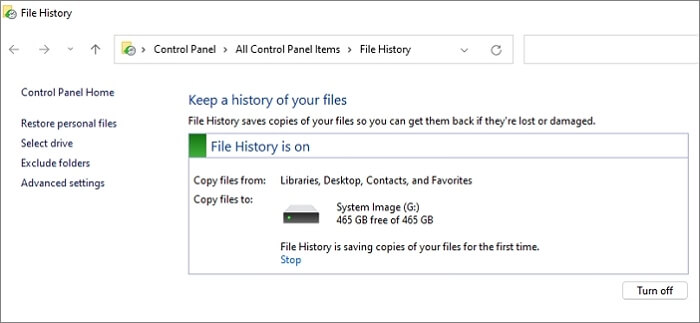
Step 4 . You can also choose in the advanced settings how often File History is backed up and how long previous backup versions should be kept.
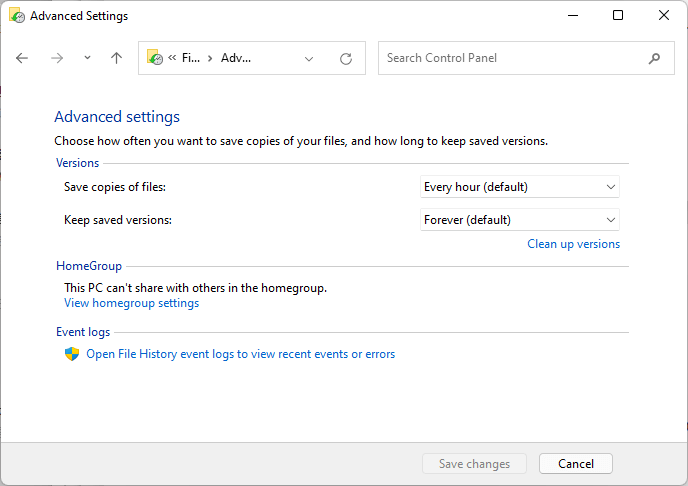
Note: You can always turn off File History backup from settings.
2. Sync files and settings in Windows Backup
Windows Backup is a new feature you'll find in Windows 11, and when turned on, your Windows backs up all the settings you've selected on your PC signed in with your Microsoft account. So how do you turn on Windows Backup and start syncing?
Here's how to turn on Windows Backup:
step 1. Go to Settings > Accounts > Windows Backup, here you will see the new Windows Backup feature.
Step 2. Choose what you want to sync. If you want to use OneDrive to sync your folders, click Manage sync settings and content from Desktop, Documents, and Pictures will be available on all your devices.
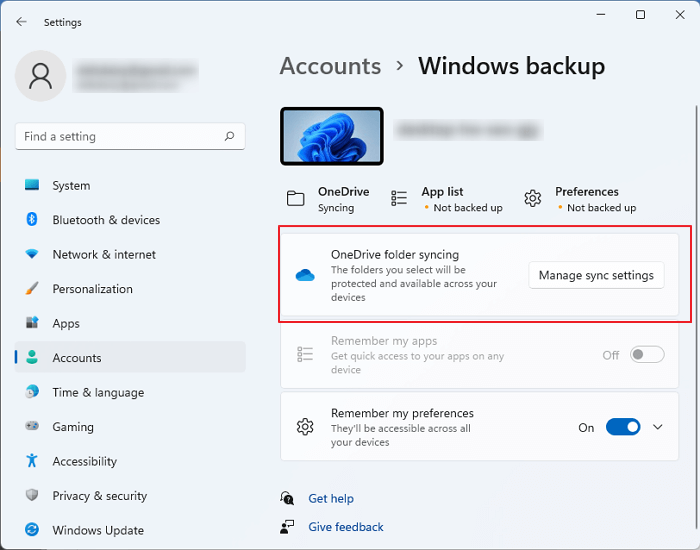
Two other items can be backed up:
remember my app
Windows 11 can remember the apps you installed. These can be restored to a new device.
remember my preferences
You can also restore preferences such as passwords, languages, and other Windows settings.
Note: If you don't have your Microsoft account or One Drive associated with your PC, you must log in with your Microsoft account.
Windows 10 Backup Utility: File History and Backup and Restore (Windows 7)
Like Windows 11, Windows 10 also has a built-in backup utility: File History and Backup and Restore (Windows 7). These two backup features are the main backup options for Windows 10 users. While none of them can create a full backup of your entire PC, they can safely back up all your personal data and files.
The main features of File History in Windows 10 are the same as in Windows 11. It can back up your important files from your PC folders, including Desktop, Documents, Downloads, Music, Pictures, Videos, and parts of the AppData folder. You can also customize which folders to back up and when.
Backup and Restore (Windows 7) is a feature that was first released in Windows 7. With Backup and Restore (Windows 7), users can create a system image on an external hard drive.
Best Windows Backup Alternative - Qiling Backup
While Windows backup tools do come with your PC and you can use them whenever you want, they don't provide users with many permissions and customization options. However, you can always use third-party software like Qiling Backup to back up your files and folders or even your entire PC. Qiling Backup gives users more power to customize backup plans, and more options are available to create backups. Let's take a look at some of the features of using Qiling Backup.
Various options: When you make a backup, you can get many different options such as a backup file, disk/partition, system, and Outlook email backup.
Backup schedule: You can also customize when backups are created, as you get options for incremental backups, differential backups, scheduled backups, specific event backups, and more.
All-in-one software: Qiling Backup is an all-in-one software that packs all the usual backup features into one and runs smoothly on Windows 11 and Windows 10.
Step 1. To initiate a backup, click the File backup button to start.

Step 2. On the left, both local and network files will be shown. You may extend the directory to pick the backup files.
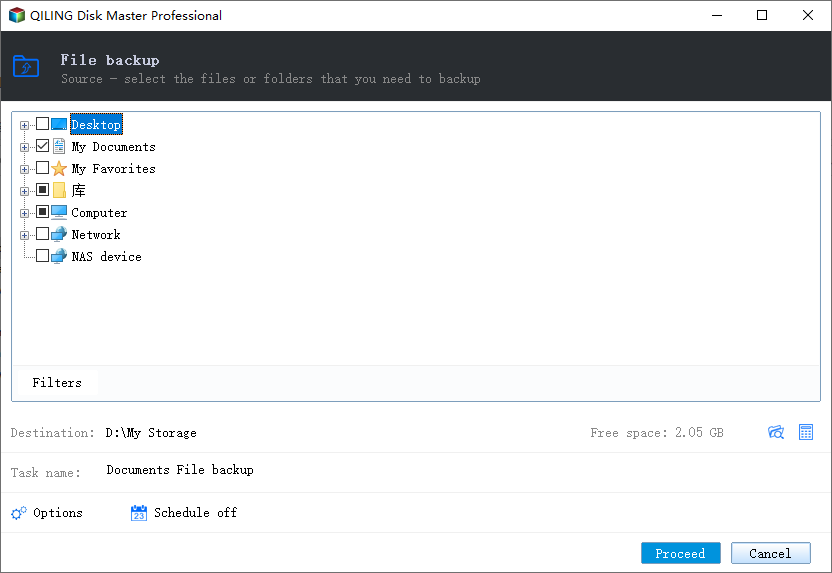
Step 3. Follow the on-screen instructions and choose a location to store the backup.
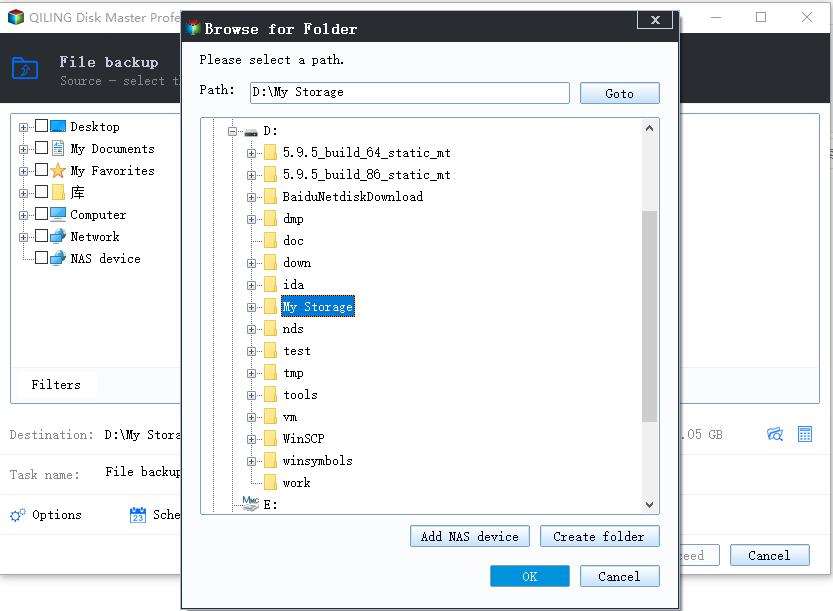
Step 4. Click Options to encrypt the backup with a password in Backup Options. There are also other additional choices you may choose to tailor the backup process to your requirements.
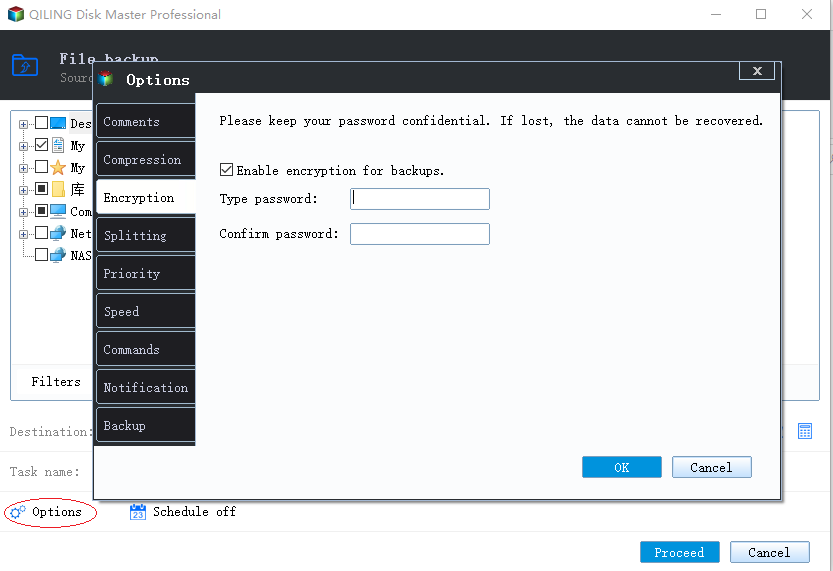
Specify the backup schedule, and choose whether or not to start the backup at a certain event in Backup Scheme
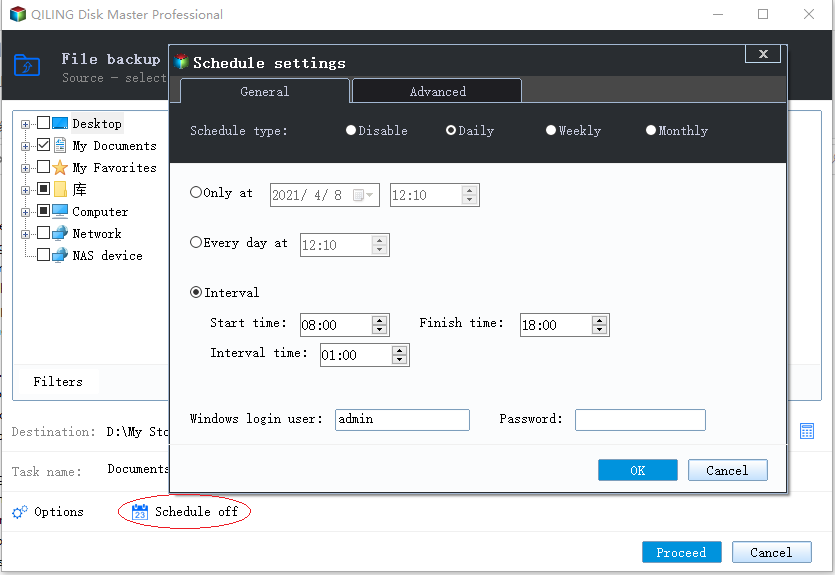
Step 5. The backup may be stored on a local disk, Qiling' online service, or NAS.
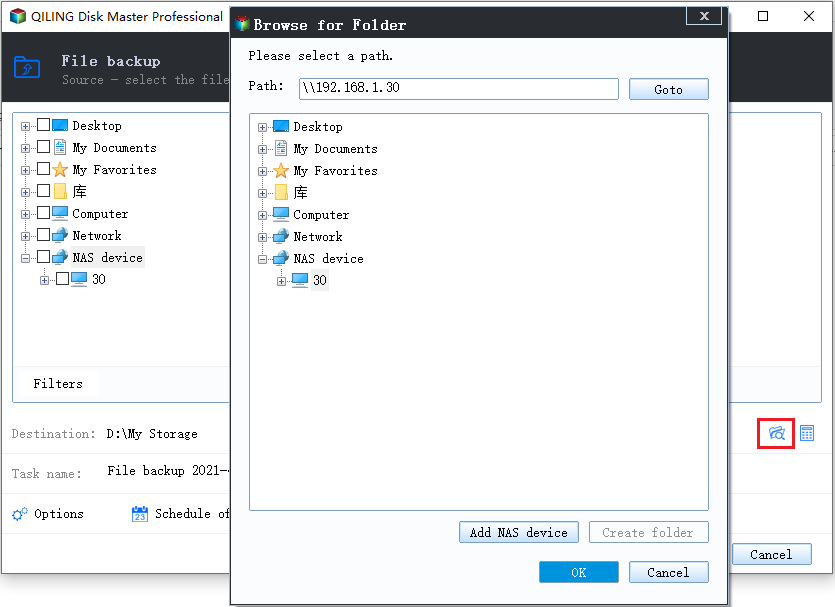
Step 6. Qiling Backup enables customers to back up data to a third-party cloud drive as well as its own cloud drive.
If you want to back up data to a cloud drive provided by a third party, choose Local Drive, scroll down to add Cloud Device, and then add and log in to your account.
Step 7. Click Proceed to begin the backup process. The backup job will be presented as a card on the left side of the panel after it has been finished. Right-click the backup job to handle it further.
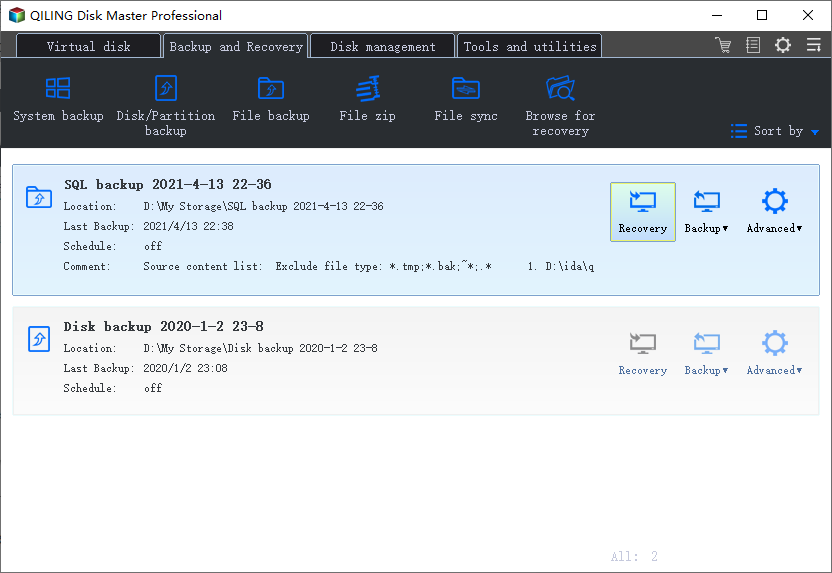
Windows 11 Backup vs. Windows 10 Backup vs. Qiling Backup
All in all, all the built-in tools in Windows 10 and 11 come in handy when trying to make small backups of your personal data and files. However, neither File History Backup nor Windows Backup can back up your entire PC. Therefore, if you plan to create a full backup of your PC, it's best to use third-party software such as Qiling Backup to ensure that all your files are safely backed up on your drive. To learn more about Qiling Backup, please visit our website.
Related Articles
- Top 10 Reasons to Download Qiling Backup
- [Solved] This Application Was Unable to Start Correctly (Error Code: 0xc000007b)
- [Download] Windows 10 Recovery Tool for 32 Bit and 64 Bit
- Qiling Backup Free vs Home: Am I Giving Too Much Away?